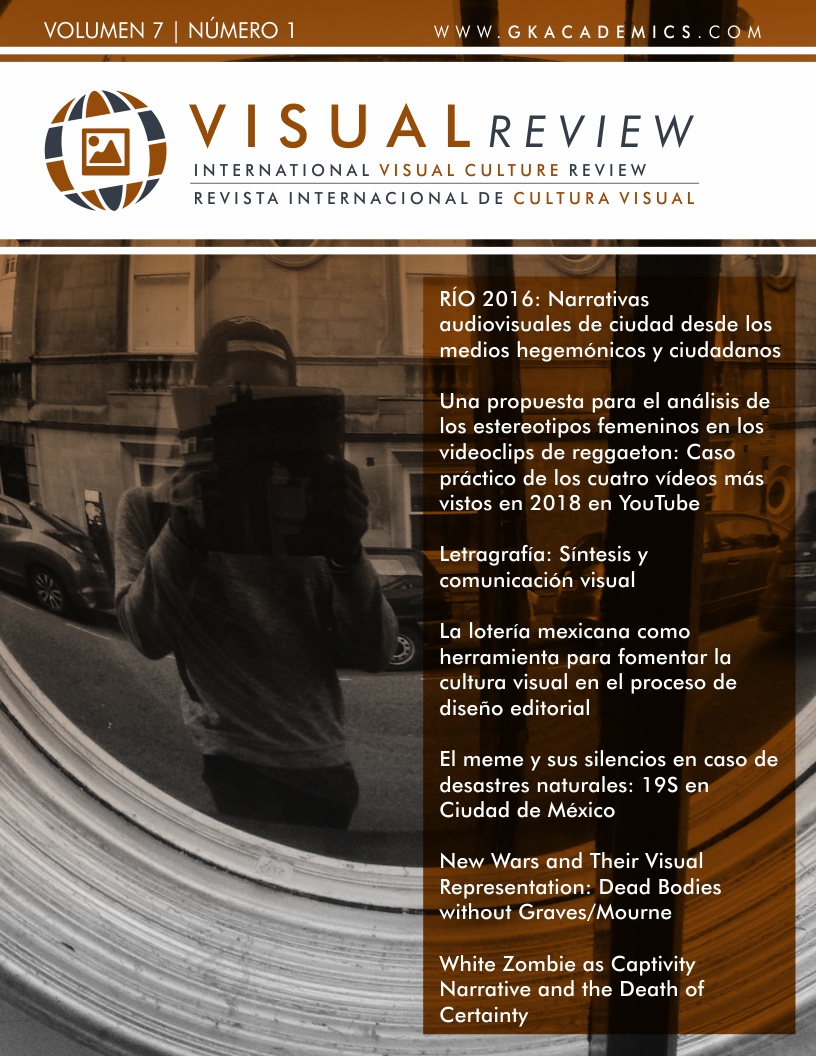The Meme and its Silences in Case of Natural Disasters: 19S in Mexico City
DOI:
https://doi.org/10.37467/gka-revvisual.v7.2165Keywords:
Meme, Visual Silences, Natural DisastersAbstract
In cases of natural disasters, societies enter into emergency and emotions overflow derived from the break with their daily lives because of the tragedy that this events generate. The aforementioned is reflected in digital social networks, where ethical codes and self-regulation of the population are made explicit about what can be said or shown and what cannot, generating moments of multiple silences and imposed for some formats, especially those which are humorous, as is the meme.
Downloads
Global Statistics ℹ️
|
702
Views
|
243
Downloads
|
|
945
Total
|
|
References
Bajtín, M. (2003). La cultura popular en la edad media y en el renacimiento; El contexto de Francois Rabelais. Argentina: Alianza Editorial.
Collins, R. (2009). Cadenas de rituales de interacción. México: Anthopos.
Dawkins, R. (1976). The selfish gene. New York: Oxford University Press.
Federación Internacional de Sociedades de la Cruz Roja y de la Media Luna Roja, (s/fecha), [en línea], URL:https://www.ifrc.org/es/introduccion/disaster-management/sobre-desastres/que-es-un-desastre/, [fecha de consulta: 12 de febrero de 2019].
García, G. (2014). Repensando el Museo Virtual: La creación de museos virtuales comunitarios (Tesis de Maestría). México: Universidad Nacional Autónoma de México, Ciudad de México.
Garibay, R. y Fonseca, G. (2017). Guía de campo para la primera ayuda psicológica. México: CENAPRED.
Le Breton, D. (2006). El silencio. Aproximaciones. Madrid: Ediciones Sequitur.
Mier, R. (2008). Políticas y estéticas del miedo. Las afecciones crepusculares. Tramas 30, UAM-X, México, 2008, pp. 11-58.
Pan American Health Organization. (2012). Mental Health and Psychosocial Support in Disaster Situations in the Caribbean. Publicado en asociación con el Mental Health Program and the Area on Emergency Preparedness and Disaster Relief. Washington D.C.
Saló, G. (2003). ¿Qué es eso del formato?: Cómo nace y se desarrolla un programa de televisión. Barcelona: Editorial Gedisa.
Sánchez, J. (2019). Los silencios como acción política para la escucha y el reconocimiento. Un aporte conceptual (Tesis de Maestría). México: Universidad Autónoma Metropolitana-Xochimilco, Ciudad de México.
Steiner, G. (2003). Lenguaje y silencio. Ensayos sobre la literatura, el lenguaje y lo inhumano. Barcelona: Editorial Gedisa.
Urpí, M. (2004). Aprender comunicación no verbal. La elocuencia del silencio. México: Ediciones Paidós.
Vélez, J. (2007). Evolución en la tecnología: de la inteligencia artificial al meme. México: Ed. Palabra de Clío.
Downloads
Published
How to Cite
Issue
Section
License
Those authors who publish in this journal accept the following terms:
-
Authors retain copyright.
-
Authors transfer to the journal the right of first publication. The journal also owns the publishing rights.
-
All published contents are governed by an Attribution-NoDerivatives 4.0 International License.
Access the informative version and legal text of the license. By virtue of this, third parties are allowed to use what is published as long as they mention the authorship of the work and the first publication in this journal. If you transform the material, you may not distribute the modified work. -
Authors may make other independent and additional contractual arrangements for non-exclusive distribution of the version of the article published in this journal (e.g., inclusion in an institutional repository or publication in a book) as long as they clearly indicate that the work was first published in this journal.
- Authors are allowed and recommended to publish their work on the Internet (for example on institutional and personal websites), following the publication of, and referencing the journal, as this could lead to constructive exchanges and a more extensive and quick circulation of published works (see The Effect of Open Access).













